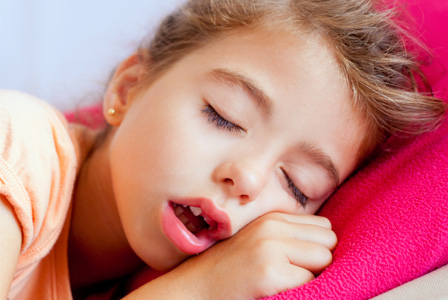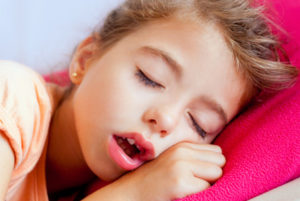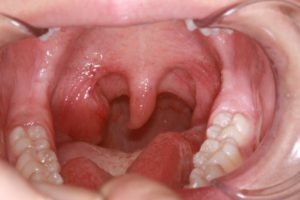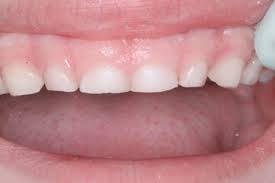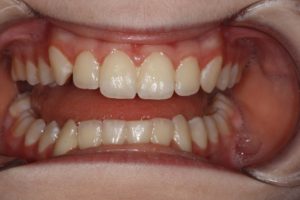Identifying sleep disorders in pediatric patients requires more observation than questions, as with adults.
The #1 factor affecting sleep in kids is enlarged tonsils and adenoids. Decreased oxygenation because of the airway restriction upregulates the sympathetic nervous system (fights or flight part of our nervous system) and children react as if they are fidgety, distracted, ADD/ADHD-like behaviors, such as emotional outbreaks or over-reaction to stimuli. They may have trouble focusing or concentrating. These behaviors can likely be identified in younger patients (up to middle school).
If they have large tonsils, a tongue that seem too big, narrow arches; all are signs of airway restriction. Just because you can’t see the tonsils, doesn’t rule out enlarged adenoids (tonsil tissue at the back of the nasal airway). These children will typically have dark rings under their eyes and mouth breathe.
Children or teens that present with worn or chipped teeth from grinding have a high likelihood of sleep disordered breathing. Bruxism is a known marker for a sleep disorder in children. As in adults (but more pronounced in kids), clenching/bruxing is thought to be a reaction to a collapsing airway as inspiration begins. Stress is not a valid explanation in the orthopedic TMJD and sleep literature for parafunction, although there are rare exceptions.
This patient was referred to me for TMJ popping and pain and headaches; after imaging her airway she was referred to have her tonsils and adenoids out, which stopped the clenching (that had damaged her TMJ’s), as a result slept better, was no longer fatigued, no longer had to nap after school, and her behavior “calmed down”. Her TMJ’s rehabilitated with orthotics as she slept better.
Children with SDB (Sleep Disordered Breathing) can have painful jaw muscles and headaches, but won’t typically report it. Push on the masseter & temporal muscles and press over the jaw joints. Pain is an indication of parafunction, as is clicking/popping.
Narrow maxillary arches is another sign identifying mouth breathing. Children who mouth breathe have maxillary arches that have a high palatal vault, are more “V” shaped than horseshoe-shaped and have less spacing between primary teeth. Bicuspid depression indicates a chronic mouth breathing condition.
Reports of children being difficult to put to bed at night and who resist getting up in the morning are another suggestion of improper sleep.
Bed wetting can be a sign that deeper sleep stages aren’t being achieved. Deep sleep, the bladder is inhibited from filling. Patients who don’t spend enough time in restorative sleep stages have to go to the bathroom a couple times per night. Children may wet the bed unknowingly.
We must keep examining patient’s mouths, throats, and teeth from a sleep/parafunction connection. TMJ clicking and pain is also a sign that they are clenching or grinding at night and has a strong correlation to sleep disordered breathing. TMJ problems especially popping and clicking doesn’t “go away” and is sometimes secondary to the sleep disordered breathing problems.
I am available to consult on any of these issues, and help make referrals for tonsil/adenoid removal with clinical and 3D airway measurement of the tonsils and adenoids.


